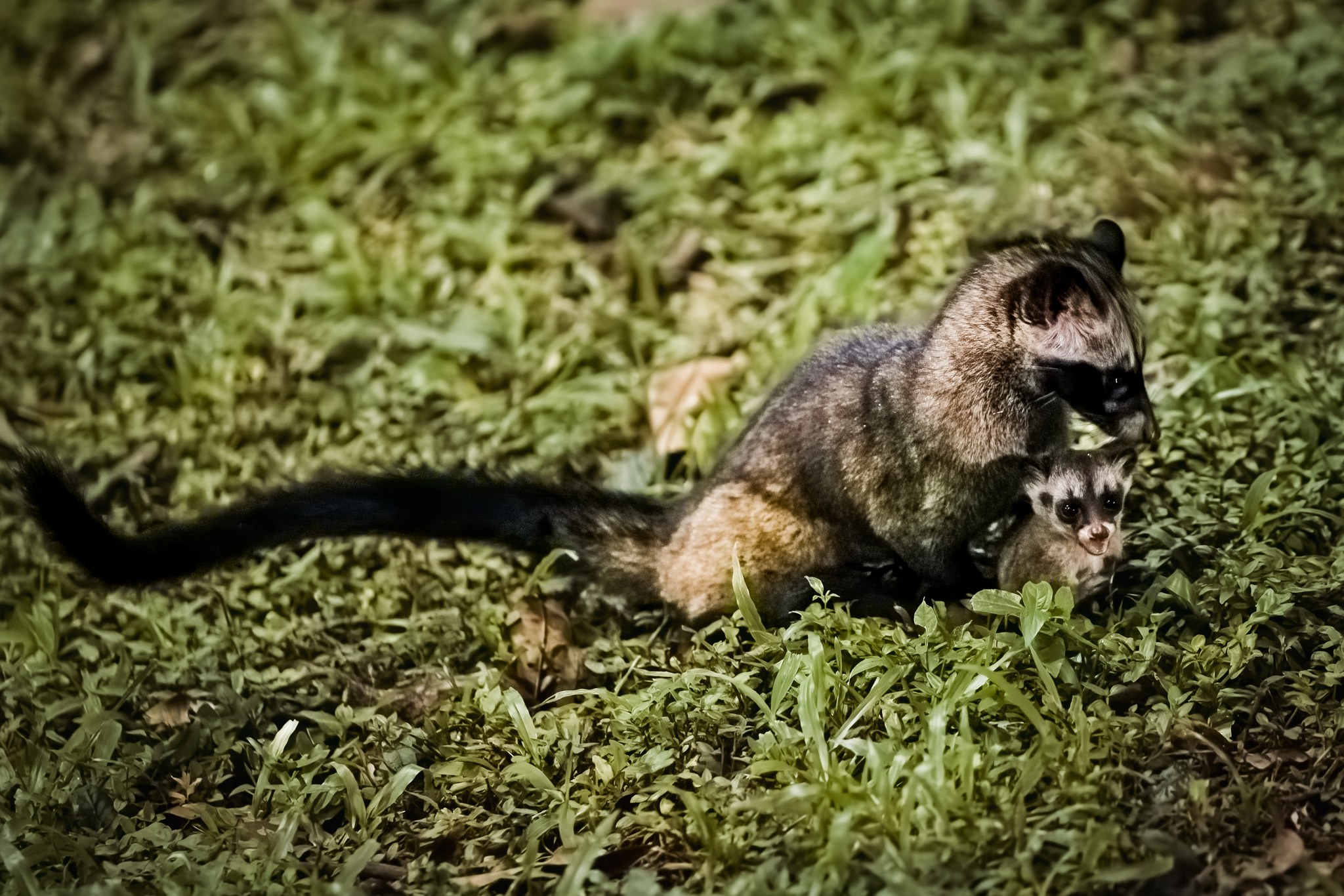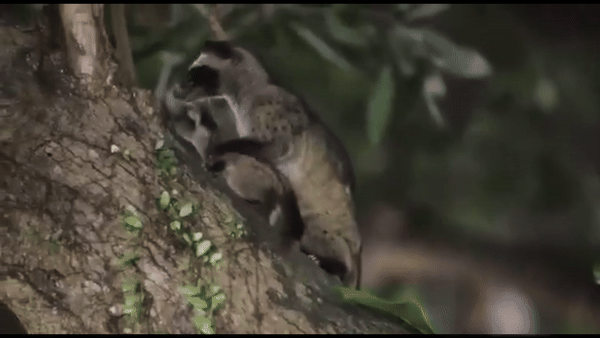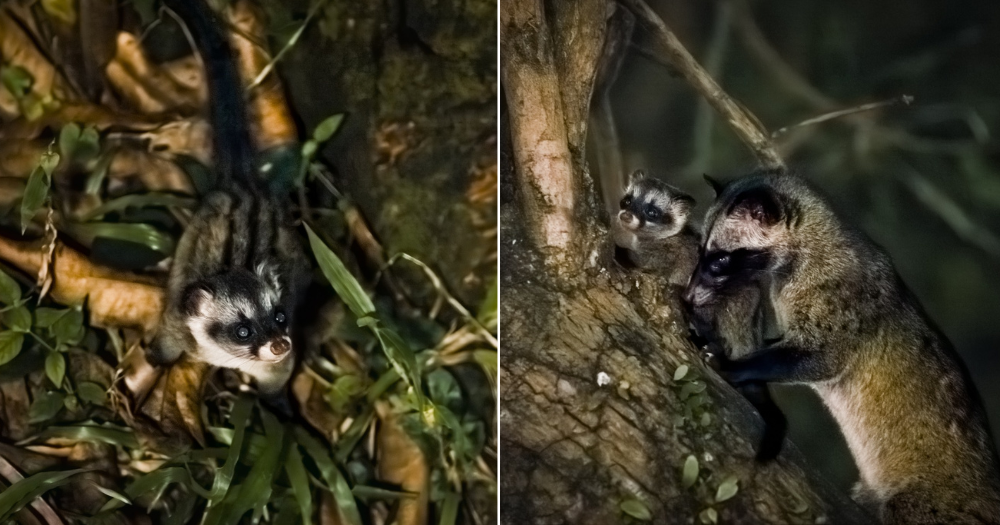On a quiet night on May 17, 2024, Tan Yong Lin and friends were photographing civets when they heard soft, shrill cries from a treetop, followed by a thud on the ground.
Upon closer inspection, it was a baby common palm civet that had fallen off a tree and onto a grassy slope.
The fall was approximately three to four stories high.
Tan described the incident as "nerve-wracking" in a May 19 post in the Singapore Wildlife Sightings Facebook group.
A mother's rescue
The baby civet was momentarily motionless.
Witnessing the perilous fall and the unmoving creature, Tan shared with Mothership, "we were worried that it could have been badly injured, or even worse dead."
Fortunately, it came around and shortly began to let out sharp cries, as though aware of the precarious situation it was in.
Speaking to Mothership, Tan remarked that it was a novel experience hearing a baby civet's call, describing adult civets to be usually "silent and stealthy."
As the vulnerable baby civet repeatedly called for help, Tan said the commotion alerted a curious community cat in the area who watched it attentively.
Thankfully, it did not disturb the crying baby civet.
Soon enough, the mother civet was alerted to its child's distress and nimbly scurried down the tree to attend to her young.
 Photo from ylint / IG
Photo from ylint / IG
The mother civet then pushed its baby towards the tree.
In its mother's reassuring presence, the baby civet began hauling its body upwards using its tiny paws.
 Photo from ylint / IG
Photo from ylint / IG
In a video Tan filmed, the mother can be seen assisting the baby from behind, occasionally providing a push or two.
 GIF from ylint / IG
GIF from ylint / IG
The baby civet continued to let out soft shrieks while the duo inched their way up the tree and disappeared into darkness.
In his Facebook post, Tan urged members of the public to avoid crowding around a baby civet if they happen to encounter one.
Common palm civet
According to the National Parks Board (NParks), the common palm civet is typically found in forests, parks, mangroves, or roof spaces of urban buildings.
It is a shy nocturnal creature who prefers to stay in high places where it is out of sight.
Being an omnivorous creature, it feeds on fruits and small creatures like small snakes, insects and rats.
What to do when encountering a baby civet
Baby civets usually begin to venture out two to three months after birth.
They are usually accompanied by their mother to forage.
When encountering a stranded baby civet, NParks advises the public to leave it alone and not attempt to pick it up.
This is to prevent creating unnecessary commotion that may scare its mother from picking it up, which may cause it to abandon its child.
If the mother is in the vicinity, it will respond to its child's cries and attend to it.
Related stories
Top photos from Tan Yong Lin
If you like what you read, follow us on Facebook, Instagram, Twitter and Telegram to get the latest updates.



